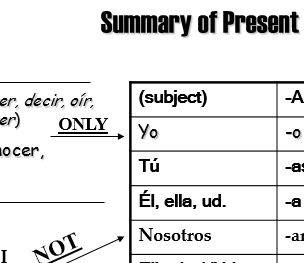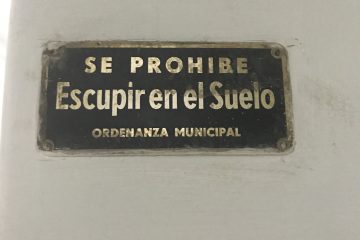I’ve skipped the #6 post for now and you’ll find out later why.
Two of the resources I released this year were verb charts, a free pack of the three most common tenses and a complete pack of 8 charts available for purchase. You can find both of them here. But before you use them, please read this post, the 5th most popular post of 2014.
How I use verb charts
It occurs to me that putting resources in blog posts is all well and good, but then months pass and the blog post gets buried, and what if a teacher who just found Musicuentos needed that very resource? So, I’m about to begin releasing resources I’ve developed through a special section of the site. You’ll never guess what the first one is going to be.
Okay, I’ll help you out. It’s verb charts.
Wait, VERB CHARTS?
Sra. MUSICUENTOS BLOGGER USES VERB CHARTS?
I know, I just broke your matrix a little bit.
But for sure, I couldn’t release resources offering you verb charts without explaining how I use them.

When to introduce verb charts
The biggest difference between the me I am now and the me I was when I first started teaching, regarding verb charts anyway, is when my students see them. In my opinion, verb charts aren’t useful in acquisition but they are helpful in refining accuracy. So, my students do not see their first verb chart until their eighth semester of language class. See, I started to notice -and I bet you have too- that my students couldn’t get to an accurate verb conjugation without going through the list. The ones who were good were just better at hiding that they were doing it; they did it in their heads. You’ve seen it, that pause that means the student is thinking, “hablo, hablas, habla” and then comes up with “Ah! Hablamos!” But if my students didn’t know there was such a thing as a verb chart, they wouldn’t have to “count down” so to speak.
In my novice classes, I introduce verb endings as patterns. Not by “regular verbs,” “stem-changing verbs,” “g-verbs,” and so on. Because when students want to talk about what they do in the summer, it makes no communicative sense for me to say “No, you can’t use that word because we haven’t done stem-changing verbs yet.” Rather, my patterns are by subject. We storytell and pattern with the I subject for a while and then quickly add the you so students can ask questions of a classmate. Then we add the we as a reporting tool- I do this, do you do this?, we do this.
By the time my students get to intermediate-mid, however, we’re starting to really focus on developing some accuracy in multiple time frames. At this point, I find it helpful to give them access to an organized picture of how verb endings work. They’re aware enough of the changes and have used the changes enough that the chart becomes a tool for checking themselves, not a tool for how to find the communication in the first place.
How to use verb charts
My other important caveat with verb charts is that I don’t teach them. The chart is a tool for my students to use to check and improve their accuracy, not for me to teach. Why? Because they’re not communication. They’re not comprehensible input. Therefore, they are not a teaching tool in a communicative classroom. So, I pass them out, we spend about 15 minutes looking at the information, and then they go in a notebook for students to use as a reference when they want to. I don’t talk about them again unless I’m asking a student to check something they’ve done.
So please, feel free to download my verb chart resources. But don’t lose sight of the goal of your classroom: to encourage accuracy as a part of communicative competence, not to teach accuracy for the sake of writing the correct letter in the blank.
Update March 1, 2014:
The Simple Verb Pack is now available on the Resource page and through my TeachersPayTeachers store.
2 Comments
Comments are closed.




This is very helpful. And yet, my question remains: As one who is bound to a textbook, at least for the upcoming school year, how, exactly, does one introduce and practice all six forms of a verb with students through Comprehensible Input? I look forward to your reply.
I would approach this in one of two ways, according to your methodology and the amount of time you have: 1) depth in a tense or 2) depth in a set of verbs. That is, I would choose to be very thorough in the tenses I knew students needed in order to complete tasks at their current and target proficiency levels, and very shallow in the others. Alternatively, I would choose to be very thorough across your six forms with the highest frequency verbs (the power seven or ten or fourteen, whatever list you’re looking at). Depending on the amount of time, class size, and general student aptitude, you may actually be able to accomplish both.
I hope this helps! Thanks for a great question.